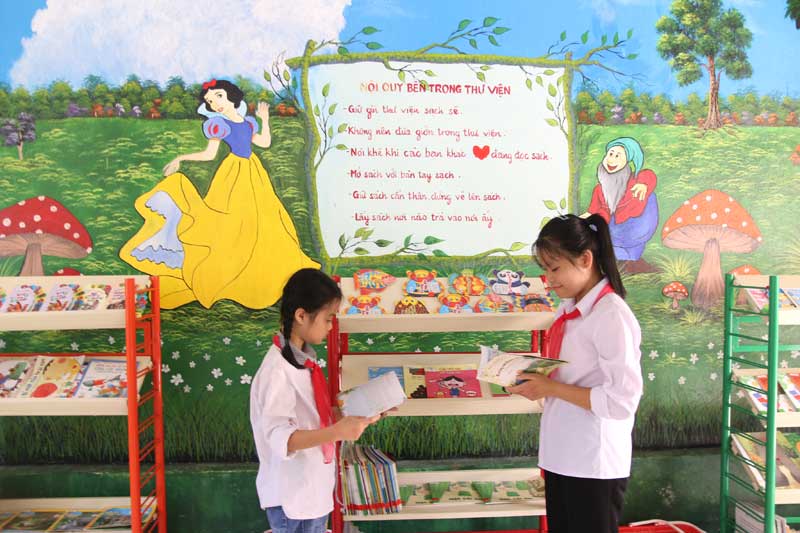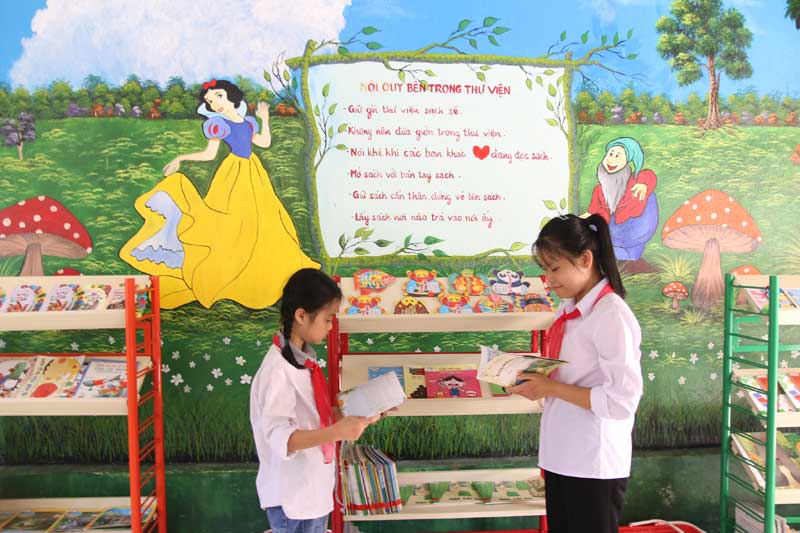


 The "Friendly library” of Kim Tien
Secondary & Secondary School (Kim Boi) always attracts students to read
books to improve knowledge.
The "Friendly library” of Kim Tien
Secondary & Secondary School (Kim Boi) always attracts students to read
books to improve knowledge.
Since implementing after-school activities, the teachers have instructed the students to go to the "Friendly Library” everyday so that they can explore different types of books, read books and stories. In addition, they have guided them how to create a green - clean - beautiful environment, building a sense of responsibility for the library. Up to now, there is a total of more than 8,500 books and stories of all kinds in the library. The fact that the library was put into operation has brought confidence to the parents and the students and the parents have participated in the reading activities with the children.
Most of the students coming to the school library are very interested in the bookcases and the library's decoration. With the friendly reading spaces, the library has been helping students freely explore, freely find and read the good books that they love. A lot of students have improved their best ability in drawing, picture painting, storytelling and so on. Their self-governance has also been improved.
The school's model of the "Friendly Library” has brought practical results when it always attracts 100% of students coming there to read, exchange and share interesting information during the breaktime and before each class. The students seem to enter a world of books, stories with many genres such as comic books, children's newspapers, children's stories...
On average, there are about 100 turns of students coming to the library to study and read books everyday. Besides, using the resources to support the change of students' learning style and teacher's teaching methods has been creating favorable conditions for students to access books and articles, practice the habit of reading books to acquire and cultivate knowledge. Especially, it has helped to strengthen skills and improve the students’ Vietnamese ability to study their subjects well, develop the abilities and qualities and create joy when they go to school.